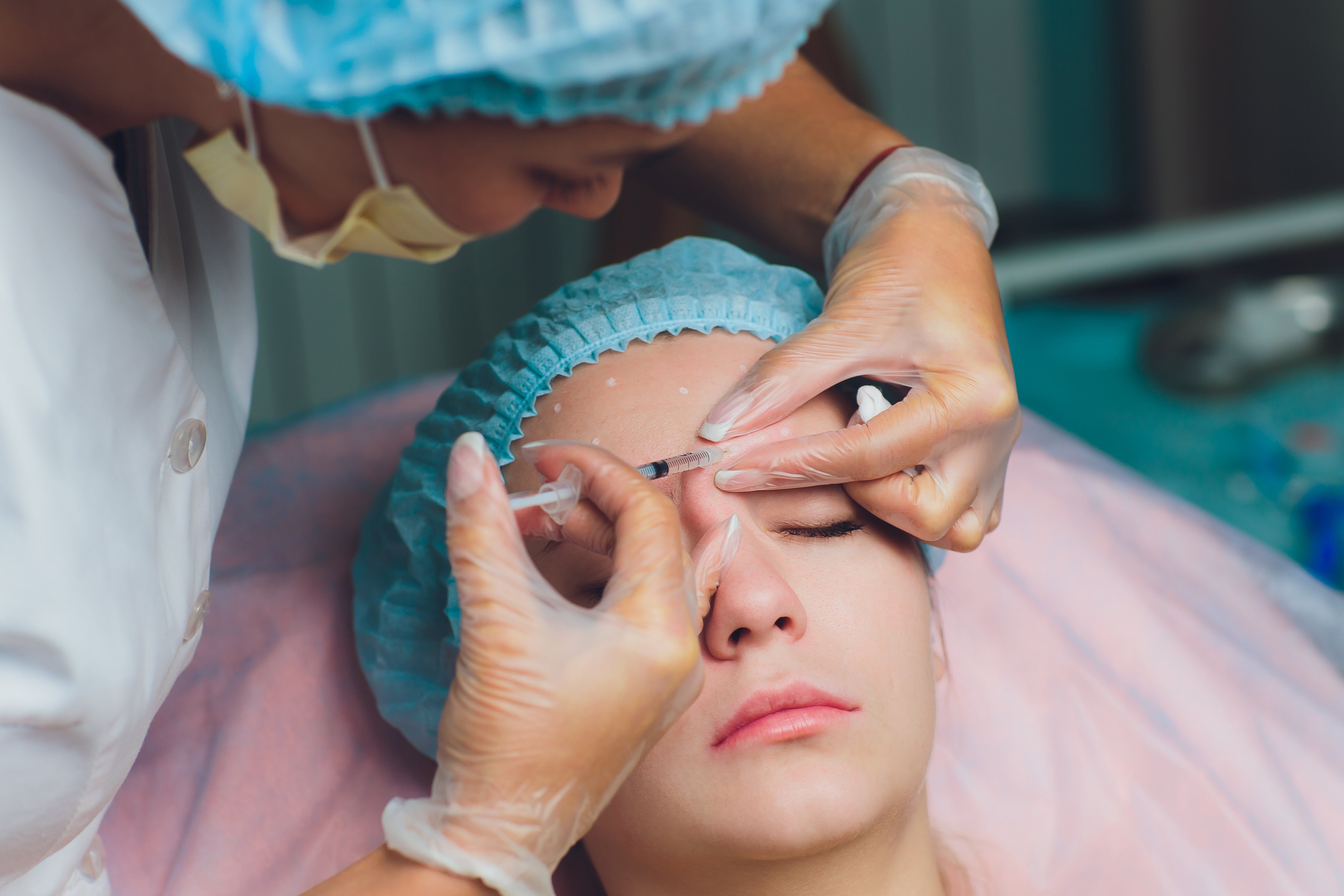- Case-Based Roundtable
- General Dermatology
- Eczema
- Chronic Hand Eczema
- Alopecia
- Aesthetics
- Vitiligo
- COVID-19
- Actinic Keratosis
- Precision Medicine and Biologics
- Rare Disease
- Wound Care
- Rosacea
- Psoriasis
- Psoriatic Arthritis
- Atopic Dermatitis
- Melasma
- NP and PA
- Skin Cancer
- Hidradenitis Suppurativa
- Drug Watch
- Pigmentary Disorders
- Acne
- Pediatric Dermatology
- Practice Management
- Prurigo Nodularis
- Buy-and-Bill
Article
New Dysport injection technique
Author(s):
Researchers using a new technique for injecting abobotulinumtoxinA (Dysport, Galderma) to treat glabellar lines found it might be more likely to result in patient satisfaction than the conventional approach.
Researchers using a new technique for injecting abobotulinumtoxinA (Dysport, Galderma) to treat glabellar lines found it might be more likely to result in patient satisfaction than the conventional approach. (Евгений Вершинин - stock.adobe.com)

Dr. Karbassi

Researchers using a new technique for injecting abobotulinumtoxinA (Dysport, Galderma) to treat glabellar lines found it might be more likely to result in patient satisfaction than the conventional approach, according to a study published in the February 2019 Journal of Cosmetic Dermatology.
The study’s lead author Esmat Karbassi, M.D., Kerman University of Medical Sciences in Kerman, Iran, says that when providers use the usual technique to inject Dysport into the glabellar lines, two significant problems might arise among patients: “First, in the most common technique, the tip of the eyebrow falls, which leads to the creation of an angry and artificial face in the patient. Second [is] increased dermatochalasis, which increases the look of the skin laxity in the outer half of the upper eyelid.”
Providers using the conventional injection method usually use three to five points for injection - one in the middle of the procerus muscle at the mid-brow region; two, with one in each side right over the medial canthus, 1 cm over the orbital ridge; and two in the mid pupillary line, according to the paper.
The new technique described in the paper overcomes both potential problems, according to Dr. Karbassi.
With this new technique, the injection is performed directly and ingested gradually into the glabellar muscle sheath. Study authors say they reassessed the responsible anatomic muscles creating the wrinkles to modify the injection technique.
Injectors first asked patients to frown, in order to identify the corrugator muscle line.
“The needle tip passed through the muscle sheath just from the nasal side of the brow tip. Then the whole length of the needle entered throughout the specified path upward and lateral on the eyebrow length,” they write.
Afterwards, they asked patients to frown again. The injectors could tell by the increase in tingling sensation that the needle was in the muscle sheath. They then removed the needle tip from the muscle in a way, they write, that the last volume of 0.1 cc injected deeper into the nasal section.
“The opposite muscle was also injected similarly and the third injection was carried out in the procerus muscle in the mid brow region of the nose root,” they write.
Dr. Karbassi and colleagues used this approach to inject 104 men and women, ages 25 to 55, with moderate to severe glabellar lines. Forty-nine of those patients had been injected with Dysport using the conventional method and weren’t satisfied with their results. They followed study subjects for up to 180 days post injection.
They found 87.5% of patients responded in the first 48 hours, with the remaining patients responding within the first week after injection. Frown lines disappeared in 88.5% of patients in static mode and 85.6% in mechanic mode at 30 days post injection. More than 86% of patients were completely satisfied at three months post injection. Maximum injection durability at six months post injection was 38%, versus 52% at four months and 32% at three months.
Studies have reported a 3% to 5% prevalence of eyelid ptosis with the conventional injection approach, they write. One among the 104 patients in this study experienced eyelid ptosis, they report.
This study, according to the researchers, offers a new abobotulinumtoxinA injection technique that could be efficacious for treating glabellar lines, especially in patients who weren’t satisfied with results from the conventional injection approach.





